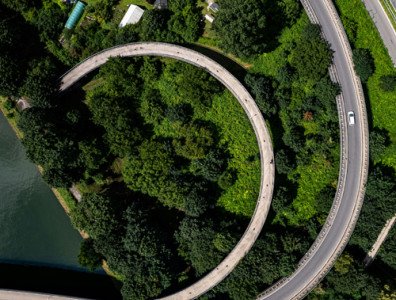Built to last: Infrastructure governance needs a hard reset
New Zealand is ‘sweating’ its infrastructure beyond design life. A new report says the fix lies not just in engineering, but in governance.
New Zealand’s infrastructure isn’t broken – yet. But it is ageing, overstretched and increasingly vulnerable to the compounding impacts of climate change, population growth and decades of underinvestment.
According to the Built to Last report released by the Helen Clark Foundation and global engineering advisory firm WSP this month, we are now relying on infrastructure systems that are, quite literally, being ‘sweated’ beyond their design lives. And the costs of continuing down this path – financially, socially and environmentally – are mounting.
The report’s message is blunt: infrastructure asset management is not just a technical or operational concern it is a governance issue. In fact, when critical infrastructure fails, roads wash out, pipes burst or buildings become unsafe, it is as much a failure of governance as it is of engineering.
One of the clearest signs of this failure lies in how New Zealand approaches depreciation and reinvestment. Accounting depreciation is not a savings mechanism earmarked for asset replacement, it is a return of capital to asset owners, intended to enable thoughtful decisions about how best to retain or enhance the value of those assets over time.
Yet too often, this opportunity is missed. Instead of actively managing reinvestment to support the productive value of existing infrastructure, the focus tends to skew toward short-term savings or deferral.
For example, the New Zealand Transport Agency collected $2.5 billion in road depreciation between 2016 and 2022 but spent just $1 billion on renewals during the same period. Local government, meanwhile, reinvests only about 76 cents for every dollar of core infrastructure depreciation.
This underinvestment not only weakens the condition of critical assets but also limits their ability to deliver economic, social and environmental returns over the long term.
If depreciation is to fulfil its purpose, it must be paired with active, future-focused decisions about how to deploy that capital – not just to replace like with like, but to adapt, improve and optimise the infrastructure we rely on.
This is not just about preserving physical assets, it is about preserving their ability to deliver public value. Existing infrastructure holds enormous productive capacity, and failing to maintain it erodes its economic, environmental and social contribution.
Strategic stewardship means more than approving capital budgets; it requires boards to actively oversee how depreciation funding is reinvested to generate the greatest long-term value. That may involve replacing assets with upgraded or adaptive alternatives, or making deliberate choices not to replace them at all.
Infrastructure investment should never default to ‘like for like’. It should be a value-based decision that recognises both the embedded potential of existing assets and the opportunity to deliver greater resilience, equity or efficiency through reinvestment.
This shortfall is not just about money – it’s also about mindset. Too often infrastructure is treated as a sequence of standalone projects, rather than long-lived systems that require stewardship over decades.
The report calls for a fundamental shift in how boards and decision makers approach asset planning. Instead of focusing on upfront capital savings or political cycles, the emphasis needs to be on whole-of-life value: integrating climate resilience, demographic trends and equity into investment decisions.
As the report notes, up to 99% of the infrastructure needed to support New Zealand’s future is already in existence, underscoring the importance of investing in what we already have, not just what we plan to build. Yet that shift is difficult without the right tools and systems.
The report highlights persistent gaps in the quality and accessibility of asset data. Across the country, information about infrastructure condition is inconsistent, outdated or missing altogether.
Many decisions are still based on asset age, particularly for buried assets like stormwater pipes, rather than on actual condition or risk. This limits the ability of boards and executives to plan proactively, and undermines transparency around performance and value for money.
The situation is exacerbated by a shortage of skilled asset managers. The profession is under-recognised, under-resourced and in many cases under pressure. Without consistent investment in asset management capability – including training, qualifications and leadership pathways – New Zealand risks losing critical institutional knowledge just when it is needed most.
Perhaps most concerning, the governance frameworks around asset management remain weak. The report reveals that many major public sector agencies do not have asset registers or asset management plans, and few report regularly on performance. In some cases, asset management is buried several layers below the executive, with little to no visibility at board level.
As the report argues, stewardship demands transparency, accountability and assurance. It recommends exploring independent oversight, such as a national infrastructure watchdog, and the introduction of public-facing scorecards to benchmark progress across agencies.
Recent legislative developments further underscore the urgency. The Local Government (Water Services) Bill, introduced in December 2024, establishes enduring settings for New Zealand’s water services system, including provisions for economic regulation, consumer protection and public sector accountability.
As councils respond by creating new in-house business units and council-controlled organisations, the need for strong governance and independent oversight becomes paramount.
These reforms also expose the layered and often complex nature of public sector governance, where blurred lines between governance and management, political influence and multiple accountability mechanisms can hinder clear strategic direction.
For directors, the implications are clear. Infrastructure governance must move beyond short-term fixes or budget cycles. It must embrace longer-term thinking, demand better data and elevate asset stewardship to a strategic priority.
Boards should expect – and support – comprehensive asset management plans, transparent performance reporting, and investment decisions that are resilient not only to climate change, but also to the social and economic pressures ahead.
In a climate-constrained future, infrastructure resilience is about more than just building new assets, it’s about maintaining the ones we have. As the report makes clear, being built to last is not a matter of materials or design alone. It’s a test of leadership.
Considerations for directors
- Do we have a clear asset management strategy, with executive-level ownership and board oversight?
- Is depreciation funding matched by an adequate plan for asset renewals?
- How are we accounting for climate resilience, demographic shifts and technology trends in our infrastructure planning?
- Are we prioritising performance and condition-based assessments over reactive maintenance?
- What is our organisation doing to build long-term asset management capability and data maturity?
* AI assisted



